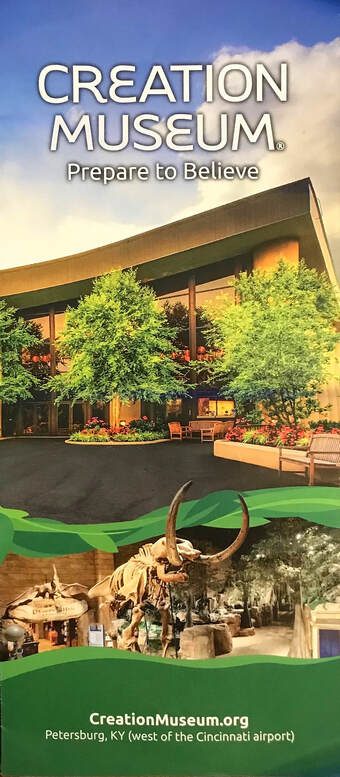 Creationist Museum Creationist Museum On a recent trip in the Midwest, as I was perusing the tourist brochures in a stand of the hotel where I was staying, I spotted one that read: “Creation Museum, Prepare to Believe”. I shook my head and sighed. Creationism has been around for a while. But the building of modern-looking museums where creationist can present their case to the people is a more recent development that probably reflects the sad state of acceptance of misinformation and rejection of facts and reason that currently prevails in our society. I have addressed the topic of creationism several times in my blog. Creationists believe the Bible to be the literal word of God. Therefore, when they perceive there is an apparent contradiction between science and their interpretation of the Bible, they choose their interpretation of the Bible. While many people and religious denominations understand that there are sections of the Bible that are not to be taken literally, creationists are wary of this notion. They argue that it is tantamount to human beings deciding what parts of the word of God they will believe, and they see this just as a recipe for distorting God’s message. They also ask, “Where do we draw the line?” If one passage is declared not to be the literal word of God, and then another, and another, where does it stop? Creationists also argue that God would not lie to us. If God communicated in the Bible that something happened, or if we can infer it from his words, then it must be true. While some people may roll their eyes at these arguments, they are certainly not trivial. Faith is central to the lives of creationists. They see any belittling of the word of God (the Bible) as anathema to their faith, and people who hold creationist views represent a strong and motivated economic and political block in our society. It would be to everyone’s advantage if the conflict between creationists and science could be resolved, and heaping scorn upon creationists does not help. In fact, many creationists are actually eager to find ways to reconcile their faith with mainstream science. But how do we go about this?
There is a possible resolution to this conundrum that has been proposed by several individuals in various versions over the years. In this post I will try to convey my own version of this proposal. Although people believe that the general message in the Bible is timeless, the book is clearly addressed to people living thousands of years ago who didn’t have the understanding or the thinking about the world that we have today. But how was God to address those people? Look at it from the point of view of God. God wanted to get key points across such as love each other, don’t kill, don’t steal, don’t lie, and so forth, but at the same time God had to provide a background to address certain common-sense issues such as how everything started, how it’s going, how it works, and how it will end. But God couldn’t do this employing the comprehension of the natural world we have today, as it would just have created confusion and bewilderment among those people. God would have had to introduce new terms such as genes, chromosomes, cells, mutations, species, evolution, deep time, plate tectonics, the fact that stars are suns, supernovas, gravity, the speed of light, etc. to describe realities that were alien to the beliefs and notions those people had regarding how the world works. It would have been counterproductive for God to dwell on complex subjects beyond the understanding of the people of those times. So the solution was to simplify the message, present it at their level of understanding, frame it within the context of their commonly held beliefs, and then move on to the really important things. Believing that the Bible is the literal word of God is perfectly compatible with this view. The world was not created in seven days and is not six thousand years old. Life arose on Earth by a process of evolution, and there was not a universal flood. However, God communicated otherwise to the people of those times so they could relate to what he was saying in a manner compatible with their understanding and beliefs about the world around them. There are several levels of what we call “the truth”. When we greatly simplify things for our children and explain issues and things in ways that they can understand, you could argue that we are “lying” to them because we are not conveying the actual complex, detailed truth. But it is unfair to say we are lying to them because they would not understand or relate to the truth if we were to explain it to them at the adult level. Similarly, the intention of God was not to lie, but to make the Bible accessible to the people of those times who had a limited understanding of their physical world. And as to the Creationist question of where do we draw the line, my answer is that we draw it at science. When God inspired human beings to write the Bible, God did not intend to teach science. The Bible is not a science textbook. The Bible is not intended to teach natural history. Pronouncements about how the physical world works are not the warp and woof of the Bible. That’s the realm of science. The Bible is about how to go to heaven, not about how the heavens go. The Bible is about the Rock of Ages, not about the age of rocks. Science has limits. It cannot tell us what is good or bad, moral or immoral, ethical or unethical. That’s the field of expertise of the Bible and religion. As a scientist I accept that science has these limits. However, at the same time, the Bible has limits too, and creationists have to accept this. The Bible cannot tell us accurate truths about the chemistry, biology, and physics of the natural world beyond the understanding of people who lived a long time ago. Science and religion have different fields of expertise or non-overlapping magisteria (NOMA), as proposed by the late Harvard paleontologist Stephen Jay Gould. Our use of science has to be tempered by values, morals, and ethics, which most of the time have their origins in religion, but what we choose to believe has to be tempered by science. Science and religion have to coexist and work together, not be adversarial, and I hope that the particular view of the Bible that others and I have proposed gains acceptance among creationist circles. Photograph by the author can only be used with permission.
2 Comments
I recently went to Fall Creek Falls State Park in Tennessee and visited several of its waterfalls including the magnificent Fall Creek Falls, which is the tallest free-falling waterfall in the Eastern United States (see below). When I visit a place such as Fall Creek Falls, I like to enjoy the immediate beauty of the area which I can perceive through my eyes, but I also like to place what I see around me in the context of the scientific knowledge we have about the place. The park is part of a geological area in Tennessee that is called the Cumberland Plateau which rises about 1,000 feet over the Tennessee River Valley. Several of the limestone, dolomite, and shale rocks in the Cumberland Plateau started out as sediments deposited in a swallow sea 360-320 million years ago. And from 320 to 300 million years ago the erosion of the Blue Ridge Mountains, which once were as tall as the Rocky Mountains, also contributed sand and pebbles to the area. Over millions of years the sediments were compacted (lithified) into rocks and the whole area experienced an uplifting event which led to the creation of swift streams that carved out gorges in the plateau creating beautiful waterfalls such as Fall Creek Falls. When I stand near Fall Creek Falls, I am standing in an area that hundreds of millions of years ago was a tropical sea. And when I look at some of the rocks under the waterfall, I am looking at sediments that came from the summits of mighty mountains. Isn’t that amazing? Doesn’t that knowledge increase our sense of wonder about the place? It does so for me, but my enjoyment was dampened a bit when I saw that some of the park signs had been vandalized in a particular way. Signs everywhere are often vandalized by individuals for different reasons, but I noticed that the sign next to Fall Creek Falls (as well as other signs in the park) had one word crossed out: the word “millions”. And in this particular sign, the word “thousands” had been scratched in below. Clearly the person defacing the sign had a problem with the sign alluding to geologic formations “millions of years old” feeling that the proper description should have been “thousands of years old”. Who would this person be and why would they choose to vandalize the sign in this way? Although I have no definite proof, I presume that the individual(s) who vandalized this and other signs in the park believe in creationism. Other persons who have read these signs have arrived at the same conclusion. Creationists are people who adhere to a literal interpretation of the Bible and believe in several things that are contrary to scientific evidence such as that the Earth is only 6,000 to 10,000 thousand years old, that there was a universal flood that covered much of the Earth, and that all living things were created at the same time, and therefore human beings coexisted with dinosaurs. In recent years, creationists have framed the refusal of mainstream science to accept their views while promoting the teaching of evolution in schools as an attack on religion and the imposition of atheism. This is not true, but I have dealt with creationists before in my blog, so I am not going to repeat myself in this post. However, I do want to address the issue behind the vandalism. How do we know the Earth is much older than 6,000 years? There are many ways to figure this out, but I will only talk about two of them here. I have already mentioned in the Interesting Stuff section of my website that one of the methods scientists use to determine the age of rocks is radiometric dating. Radioactive elements decompose into other elements at fixed rates, and by measuring the proportion of both the parent and daughter elements in the rocks, scientists can find out when these rocks were formed. The results repeatedly obtained by many scientists using these techniques applied in many areas of the Earth is that the oldest rocks of our planet are billions of years old. This result has also been obtained when radiometric techniques were applied to meteorites and moon rocks. Creationists argue that radiometric techniques rely on false assumptions and have seized on mistakes made by some scientists to discredit these techniques. However, not only have creationist arguments been refuted, but many examples abound of rocks that have been carefully analyzed and found to be much older than creationist claims. Another way to figure out that the Earth is much older than 6,000 to 10,00 years is using the science from plate tectonics. The continents of the Earth are sitting on top of areas of the Earth’s crust called plates that move over the Earth’s mantle very slowly. Some continents that were connected in the past, such as North America and Africa, have since moved away from each other, while India has crashed into Asia giving rise to the Himalayan Mountains. The rate of movement of these plates nowadays can be measured by GPS and it is in the order of 0.6 to 10 centimeters per year. If you calculate the thousands of miles that the continents must have travelled at these slow rates, you arrive at figures in the tens to hundreds of millions of years. Creationists claim (with no evidence) that plate movement was much faster in the past, but to pack all that movement of colossal landmasses into a span of a few thousand years would be impossible from a physical point of view. The error in the creationist beliefs comes from using the Bible as a textbook of natural history, which it is not. To express this in a couple of sentences. The Bible is about how to go to heaven, not about how the heavens go. The Bible is about the rock of ages, not about the age of rocks. Creationists do a disservice not only to science but also to religion itself when using the Bible in this way. All the evidence we have clearly points to a very old Earth where most changes in the landscape have taken millions upon millions of years. And vandalizing park signs is not going to change that. The photographs belong to the author and can only be used with permission. 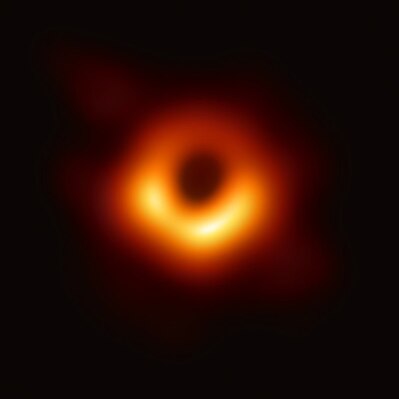 Image of the Black Hole of the Galaxy M87 Image of the Black Hole of the Galaxy M87 In the last decade, scientists made amazing discoveries. For example, scientists managed to photograph a black hole, which is the remnant of a star that has collapsed upon itself (a supernova) creating a region of space with such a strong gravitational field that even light can’t get out. Scientists also managed to detect gravitational waves, which are the ripples that form in the fabric of spacetime when cataclysmic events happen such as the collision of two black holes. Another discovery was the finding of the Higgs Boson, a subatomic particle associated with a proposed universal quantum field that interacts with other particles generating their masses. Finally, space probes sent to the planets made exciting discoveries regarding these worlds such as the way Saturn’s rings are formed (Cassini Spacecraft), the presence of water in Mars in the past (Curiosity Rover) and present (Mars Express spacecraft), or the surprising geological activity found in Pluto (New Horizons Probe). These are exciting discoveries that stimulate our imagination and sense of wonder and advance the frontiers of our knowledge of the universe. But wait a minute. How do you know these things are true? What if these scientists are lying? What if they are faking data and misleading the public? Why would they do this? Well, they could be doing this to keep getting their grants approved by funding agencies, or they may have sold out to the companies that make their multimillion-dollar equipment. How do you know this is not happening? Are you an expert in astronomy, space crafts, or physics? How do you know if the data are true? How do you know these individuals are not hiding their dishonesty behind a wall of technical mumbo jumbo and made up findings? How do you know there is not a conspiracy of dishonest astronomers, spacecraft experts, and physicists to mislead taxpayers and take their money? You would probably reply that you believe that the majority of the individuals involved in these studies are persons like you or me who strive to be honest and are genuinely interested in figuring out the truth about things. You would also expect scientists with competing views to double-check the experiments and observations of each other. Additionally, you would expect funding agencies to have mechanisms in place for reviewing the granting of funds, the results of studies, and the claims by any whistleblower regarding the mismanagement of funds or faking of any data. Finally, you would hope that any of a number of government and agency watchdog groups would notice if something strange was going on. And yes, all of the above are indeed the case. We acknowledge that there will be some dishonest individual or groups of individuals that will abuse the system, but we expect all the above safeguards will work to eventually weed them out. We also rely on these safeguards to rule out the existence of any Machiavellian conspiracy. But in any case, truth be told, if you are an average person, all the questions I asked and all the notions I put forward above are probably nothing more to you than a theoretical mental exercise. For you, things like black holes, gravitational waves, subatomic particles, and planets may be interesting, but they are not something that really concerns you that much or affects your everyday life. But here is my point. 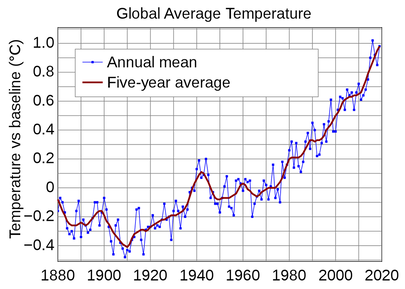 Global Warming Global Warming There are thousands of scientists who, much like the astronomers, spacecraft experts, and physicists alluded to above, are also finding out some amazing things in other fields of science. Climate scientists are finding that the Earth is warming due to human activities, and that unless we reduce our consumption of fossil fuels and implement green technologies, we are going to do great damage to our planet. Vaccine scientists are coming up with new vaccines against terrible diseases, and alerting us about the dangers of not vaccinating our children. Evolution scientists are applying the tenets of evolution to come up with useful applications that benefit our society, and warning us about the dangers of the scientific illiteracy that would be created if creationism were to be accepted and taught in schools. However, unlike things in space or in the realm of subatomic particles, climate change, vaccines, and evolution affect people directly. They are told they HAVE to use less fossil fuels and more green technologies. They are told they HAVE to vaccinate their children. Their children ARE taught in school that something that goes against their faith is true.
And what a difference this makes to some people! All those scientists who were “persons like you or me who strive to be honest and are genuinely interested in figuring out the truth about things” are now deluded, evil liars and cheats, or atheists. All those safeguards that supposedly keep science and scientists true and honest have failed in these fields, and all the science in the climate, vaccine, and evolution disciplines has become part of nefarious conspiracies to fake or misrepresent data, get money, cause harm, take away our liberties, destroy religion, or spread socialism! However, astronomers, space craft experts, and physicists are not different from climate, vaccine, and evolution scientists in that they all follow the scientific method to find the truth about the behavior of matter and energy in their fields of expertise. These people uncover the way our world and the universe works, and then they report it. All scientists do this. Why demonize and delegitimize some and not others? The answer is, as mentioned above, because what some scientists find in some fields challenges our behavior or our beliefs. This is one of the things about science that some people cannot deal with. Science is not just about generating pretty pictures and interesting experiments for show. The purpose of science is to discover reality. And in doing so, science may reveal that what you are doing is harmful to yourself, society, or nature. Science may also reveal that some of your most deeply held beliefs and convictions are not true. While many people welcome these discoveries and change their behavior or beliefs, others have a lot of problems in dealing with this and will understandably lash out at science and scientists. But that’s the way science works. Reality cannot be compromised. The Image of the Black Hole of the Galaxy M87 by the Event Horizon Telescope is free for public use. The Global Average Temperature graph by NASA is in the public domain. One of the many claims of creationists is that human beings coexisted with dinosaurs, but the fossil record does not back this claim. Dinosaurs became extinct around 65 million years ago, whereas the oldest modern human fossils are less than a million years old. So how do creationists reply to this? Creationists have pointed to alleged evidence which suggested that human and dinosaurs were contemporaries such as fossil footprints of human and dinosaurs found side by side. However, this evidence has turned up to be either the result of misinterpretations or hoaxes. Never to be discouraged by negative evidence, creationists have turned to another source of evidence: art! Ancient humans throughout the world have left a large number of inscriptions, paintings, sculptures, and other forms of art in their caves, dwellings, and artifacts such as pottery. In these, ancient humans depicted some of the animals that were in their vicinity and which they often hunted. The idea is that, if humans and dinosaurs were living side by side, dinosaurs would be represented in ancient art. Is this the case? Creationists claim that this is indeed the case, and they point to many examples of ancient art throughout the world that seem to show large animals that in some cases bear resemblance to dinosaurs. Unfortunately there are many problems with this claim. To begin with, some of these pieces of ancient art have been exposed as hoaxes. Among these are the Ica Stones and the Acambaro Figurines that depict dinosaurs or humans interacting with dinosaurs. Other instances of ancient art that were claimed to be dinosaurs, such as those at the Kachina Bridge site and at various other sites, have been reinterpreted as symbolizing other animals or mythical creatures, or to be the product of the blending of several weathered figures plus mud or mineral stains. Finally, other claims that paintings or figures of dragons represent dinosaurs are clearly a stretch of the imagination. There are some genuine depictions of animals in ancient art that bear a resemblance to dinosaurs. One of the most famous is a carving in the Temple Ta Prohm in Cambodia, which looks like a dinosaur called a stegosaurus. However upon careful analysis, this resemblance turns out to be superficial. For example, the spikes in the tail are missing, the proportion of the head to the rest of the body is all wrong, and the carving seems to show the presence of horns or ears in the animal’s head which do not occur in stegosaurs. Skeptics believe that this carving represents another animal such as a rhinoceros, and that the alleged plates on its back, which are found in other carvings in the same temple, may represent leaves. This disagreement exposes the central problem of taking ancient art as proof for the existence of something: interpretation. Even in these modern times of science, technology, and urbanization, human populations develop a cultural mythology that gives rise to fantastic beliefs in notions, characters, or entities that often end up being represented in art. This process has been probably taking place since the dawn of humanity. Even when we see an ancient carving, painting, or sculpture that bears an unambiguous resemblance to something modern, how do we know that the resemblance is not a coincidence? How do we know that what the author actually saw is what he or she depicted in the art as opposed to it being a representation of a dream, a belief, an embellished story, or something that was misperceived? To show you how problematic the interpretation of ancient art is, let me tell you about ancient astronauts. There is a group of people that claims that ancient art shows that primitive cultures had contacts with ancient astronauts and their machines. They point out to art all over the world that seems to depict images that bear resemblance to people wearing helmets and different types of crafts. For example, the lid of the tomb of the Maya ruler Pacal the Great depicts a human figure manipulating the controls of what seems to be a space vessel which even has flames coming out of one end. Egyptian hieroglyphics from the temple of Seti I at Abydos contain images of what appear to be a helicopter and other types of modern looking crafts. Petroglyphs from the Camonica Valley in Italy seem to depict figures wearing helmets. This post is not the place to deal with these claims, but let me just mention that they are all based on misinterpretations of what these figures represent. Ironically, some creationists have been among the most vocal critics of ancient astronaut proponents. However, how is using ancient art to argue for the existence of ancient astronauts different from the argument championed by creationists that humans coexisted with dinosaurs? How do we tell what is real? The answer is we can’t. Ancient art alone cannot be taken as proof of the existence of the entities represented in the art. Additional evidence is required. Consider the case of mammoths. There are hundreds of representations of mammoths in cave and other forms of art in areas of Europe and Russia, but there is also abundant evidence that ancient humans hunted mammoths or scavenged their corpses for food, and used their tusks to construct dwellings, to produce tools, and to carve and make art. The dating of mammoth and human remains and tools found in these areas also show a degree of overlap in the geological age indicating that these two species were contemporaneous. Why is there no such evidence for dinosaurs and humans? Creationists often complain that scientists are biased against their ideas, but how do they expect to be taken seriously when they demand that science upend well-established scientific theories backed by vast amounts of solid evidence based solely on a few carved or painted figures? We might as well accept that ancient astronauts visited the Earth! Photograph of Ica Stone Brattarb used here under an Attribution-Share Alike 3.0 Unported license.
Photograph of Acambaro figurines by Fchavez2000 is used here under a GNU Free Documentation License, version 1.2. A drawing of the lid of the tomb of Maya ruler Pacal the Great by Madman2001 is used here under an Attribution-ShareAlike 2.0 Generic (CC BY-SA 2.0) license. Image of the so called helicopter hieroglyphs by Olek95 are in the public domain. Photograph of petroglyphs in Italy by Luca Giarelli used here under an Attribution-ShareAlike 4.0 International (CC BY-SA 4.0) license. Image of alleged stegosaur carving at Ta Prohm Temple by Harald Hoyer is used here under an Attribution-ShareAlike 2.0 Generic (CC BY-SA 2.0) license. Photograph of a cast of a Stegosaurus stenops skeleton (AMNH 650) in the Senckenberg Museum in Frankfurt am Main by Evak is used here under a GNU Free Documentation License, version 1.2. Mammoth hunt image used here under an Attribution-ShareAlike 4.0 International (CC BY-SA 4.0) license. 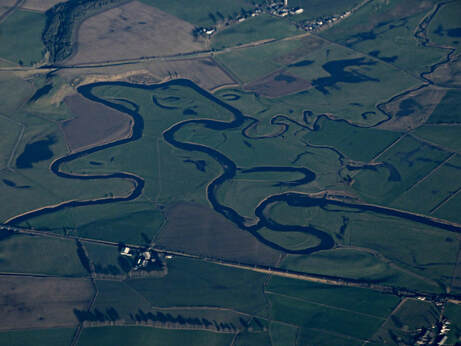 Oxbow Lakes Oxbow Lakes One aspect of meandering rivers that has always interested me is oxbow lakes. Oxbow lakes are parts of a meandering river that have been cut off from the main river and become U-shaped lakes with no inflow or outflow of water. They derive their name from the collar placed on the neck of oxes to which the plow is attached. Oxbow lakes are formed because in the bend of a curving river there is more erosion of the outer bank and more sediment deposition on the inner bank. Thus the shores at the narrow side of a river loop tend to erode and connect establishing a new channel for the river, sealing the loop, and turning it into a lake. Oxbow lake formation is a well-recognized consequence of the physics of meandering rivers and there are even mathematical models that explain their formation.  Even before science came of age, people living in river basins figured out that oxbow lakes formed as part of normal river dynamics. Although oxbow lake formation cannot be seen in real time because they can take decades to form, any meandering river has a number of these potential lakes in various stages of formation. All that smart people had to do was put together all these different stages in a sequence to figure out how oxbow lakes are formed. Today with the advent of satellites we can see the formation of oxbow lakes such as the one shown in the video below in the Ucayali River in Peru between 1985 and 2013. 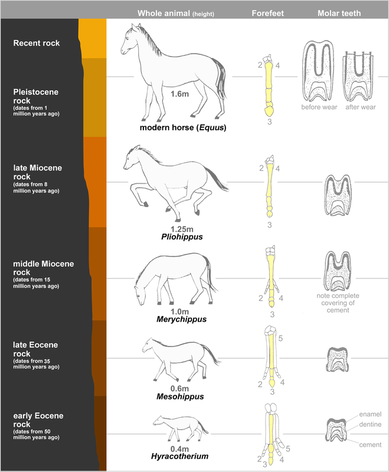 Evolution of the Horse Evolution of the Horse As far as I know, the notion of linking together the different stages of oxbow lake formation to answer the question of how these landlocked lakes form never generated any controversy. You would probably agree with me that linking all these stages to form a sequence was the smart and logical thing to do. Now I want to connect the narrative of this post so far with its title and address in parallel the theory of evolution. Even before modern science came along, fossils of plants and animals (different stages of oxbow lake formation) were being discovered all over the world that bore resemblance to modern plants and animals (fully formed oxbow lakes), but at the same time displayed some differences. Charles Darwin had the idea that (just as different stages of oxbow lake formation are linked) all these fossils were linked and represented ancestral forms of these modern plants and animals (stages of oxbow lake formation). Although Darwin’s idea at the time he formulated it came short of fully explaining how this could happen, modern genetics coupled to other disciplines like geology, embryology, chemistry, physics, ecology, and so forth have confirmed that Darwin’s idea is true. I realize that there are differences between fossils and stages of oxbow lake formation. For example, fossils are static and represent the past, while the different stages of oxbow lake formation are dynamic and are all found in the present. Also, some of the biggest evolutionary changes take place over millions of years, so we will never be able to see this process in those time scales as we can see oxbow lake formation with satellites. But my main point is that if we want to know the origin of an entity, whether an oxbow lake or an organism, and we find several apparent stages in the development of that entity that seem to point to a sequence, then linking these stages to infer how the entity came into being is a perfectly logical and smart thing to do. So why do so many Americans accept the theory of oxbow lake formation without any controversy but reject the theory of evolution? If it is legitimate to put together all the stages of oxbow lake formation to come up with an explanation regarding how these lakes arise, why is it not acceptable to do the same with fossils and living things including humans?
This is, of course, a rhetorical question. I know that creationism is based on a literal interpretation the Bible. Whereas scientists look at different stages of oxbow lake formation or fossils and then follow a bottom-up approach allowing observations and experiments to guide them in finding the truth, creationists take for certain whatever is in the Bible and follow a top down approach trying to fit observations or experimental results to scripture. I suspect that if the Bible contained a very specific religious description regarding the creation of oxbow lakes that had nothing to do with river dynamics, creationists would also be objecting current scientific explanations of oxbow lake formation. I don’t mean to disrespect or belittle something as important as faith and religion. I subscribe to Stephen Jay Gould’s proposal that science and religion occupy what he called non-overlapping magisteria, and I am sympathetic to the plight of a creationist who with horror sees atheism as the only alternative to not believing literally in the creation story described in the book of Genesis. As I have explained before, I believe that science should not operate in a vacuum. We should provide believers with a way to reconcile their beliefs with the fact of evolution. One possible way to do this involves the finding by the Pew Research Center that support for evolution as gauged by a poll can change considerably if the phrasing of the question is altered. If people were asked whether humans evolved over time by natural selection with God having nothing to do with this or whether humans have existed in their present form since the beginning of time, 31% chose the latter alternative, which is the strict creationist interpretation. However, if the option was included to allow for God somehow guiding the evolutionary process giving rise to humans, support for the strict creationist view dropped to 18%. Of course, it is not in the nature of science to deal with God or the possibility that God influenced evolution, but I favor approaches such as allowing for a role for God in the process of evolution as a means of making our population more accepting of basic scientific facts in order to avoid the needless wasteful social conflict that has dragged on for decades. That way we can speed up the day in which we will all accept that the natural history of oxbow lakes and living organisms have some things in common. Image from the air of The Carstairs Meanders in the UK by Thomas Nugent is used here under an Attribution-ShareAlike 2.0 Generic (CC BY-SA 2.0) license. The diagram of Ox Bow lake formation by Maksim is used here under an Attribution-ShareAlike 3.0 Unported (CC BY-SA 3.0) license. The image of the evolution of the horse by Mcy jerry is used here under an Attribution-ShareAlike 3.0 Unported (CC BY-SA 3.0) license. In an out of the way street in the city of Baltimore in Maryland, behind a door flanked by the statues of two lions, lies the mythically named “Protean Books and Records” store. And within the confines of this store behind a set of dark curtains lies a single-room museum with a most bizarre collection of oddities named “Doctor Gloom’s Crypt of Curiosities”. The collection was originally put together by Dr. Augustus Gloom, a gentleman with interests that ranged from the unusual to the morbid. The first incarnation of the crypt was opened to the public in 1954 in Greencastle, Indiana. It grew and remained open for two plus decades until Dr. Gloom was killed in a Ferris wheel accident in 1977. The collection then changed hands a few times and travelled across two states before being gifted to horror filmmaker Chris LaMartina and finding its way to its current location. I visited Dr. Gloom’s Crypt of Curiosities this year, and you can see some of the things that I found there in the photographs below. Now, why am I presenting this in a science blog? Let me be clear, Dr. Gloom’s Crypt is pure balderdash. I mean, Bruno the headless duck doesn’t even have webbed feet. It’s a chicken! Fiji mermaids have long been a well-known taxidermist folly. No conclusive evidence has ever been found for the existence of Bigfoot, and so on. This museum is nothing more than a combination of myth, anecdotes, hearsay, exaggerations, and fake artifacts. But it admits as much. The book I bought regarding the museum’s collection is titled: “Take Home Tourist Trap”. Dr. Gloom’s Crypt of Curiosities revels in its own fakeness. It follows the great tradition of the American Dime Museums which were popular places of entertainment for the working class during the latter part of the 19th century. I see visiting Dr. Gloom’s Crypt as some harmless fun no different from reading a work of fiction or watching a fantastic movie. But what if I told you that right now in the United States there are a number of museums and theme parks that are presenting misinformation, fake claims, and beliefs as truths? 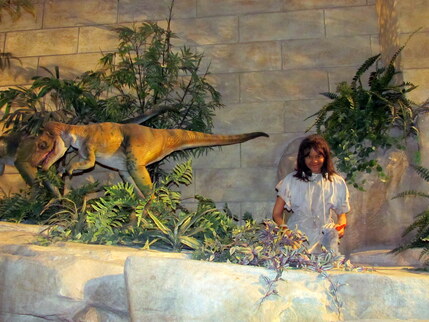 The places where this is done are the so-called creationist museums and theme parks. In these places you are told that the world is a few thousand years old, that there was a universal flood that covered the whole planet, that the animals we see around us today are descendants from those saved from the flood in Noah’s Ark, that dinosaurs and humans inhabited the same time period, and that evolution is not true. Not only are creationist arguments highly problematic but they ignore, twist, or misrepresent all the evidence generated by scientists that has conclusively demonstrated that these notions are false. The scientific evidence indicates that our world is billions of years old. Scientists have refuted creationists’ alleged evidence for a worldwide flood as well as the notion that humans and dinosaurs were contemporaries. The sheer diversity and stratification of fossils also refutes the universal flood/Noah’s Ark narrative, and evolution not only is a fact, but its tenets have been and are being applied to the betterment of our societies. I don’t believe that creationists are dishonest on purpose, and I understand the reason why they do these things. Creationists take the narrative of the Bible as literally true. And if they limited themselves to issues such as values, ethics, and morality, that would be one thing. But creationists also take the narrative of the natural history present in the Bible to be literally true, and from there they try to fit it as best as they can to evidence that is incompatible with it. In essence creationists are trying to insert a square peg into a round hole, so to speak. Not only do their beliefs taint their interpretation of the facts, but they are also presenting them as true to a wider audience and influencing minds. Because of this, I cannot excuse what they are doing. Belief is a fine thing to have, but it must be tempered by reality. If hundreds of years of evidence generated by scientists of different countries, ethnicities, and political, social, and philosophical persuasions indicates that your beliefs are wrong, then you should revise them. If the people behind Dr. Gloom’s Crypt of Curiosities started arguing that the remains of Baron Radu are those of a true vampire, or that the specimen they have of the Devil Hawk of Amchitka Island is a true mutated bird, or that their copy of the Scroll of Anubis can actually raise the dead, I would raise my voice against them and write about it. However, they don’t. Doctor Gloom’s Crypt is phony and obviously so, but the premises espoused in creationist museums are no less fantastical. The difference is that the latter will not admit it. Photo of dinosaurs alongside humans in the Creation Museum in Petersburg, KY by David Berkowitz used here under a Creative Commons Attribution 2.0 Generic (CC BY 2.0) license. 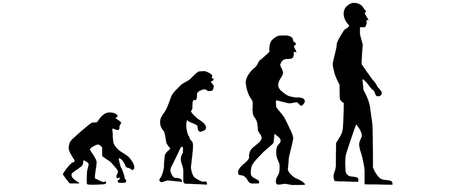 Many people who agree that evolution is a fact nevertheless are unconcerned with the creation/evolution debate. At most these people will express some qualms about the violation of the separation of church and state when creationists try to teach their religious beliefs masquerading as science in schools, but that’s about it. For them evolution is one of those “science things” that may be interesting to read about, but that is far removed from their everyday reality and does not affect them. Nothing could be further from the truth. First and foremost, evolution is the framework that allows us to understand how populations of living things propagate and change through time and space. Because of this, evolution has made possible the development of procedures and strategies in dozens of areas of human endeavor that involve dealing with biological entities ranging from DNA fingerprinting to fighting cancer. There are even scientific journals devoted to research into the application of evolutions such as one named (quite fittingly), Evolutionary Applications. However, in the interest of providing tangible examples, in today’s post we will go over some of the applications of evolutionary theory. Most people have taken an antibiotic during their life. The availability of antibiotics to control or prevent infections by bacteria is something we take for granted. However, bacteria are constantly evolving resistance to antibiotics, and new strains of multidrug-resistant bacteria are compromising our effectiveness to fight infections. This is a fact that can affect your health, as many people have died from infections with antibiotic-resistant bacteria. But is not only bacteria. Fungi are evolving resistance to antifungals, and viruses are evolving resistance to antivirals. Evolution explains why this is happening, and in the design and application of new antimicrobials, scientists have to take into account the principles of evolution to both reduce and keep up with the development of resistance by microorganisms. Beyond health, evolution also has benefited agriculture because many pests, including microorganisms, weeds, and insects, are evolving resistance to pesticides. To maintain the capacity of our farmers to peoduce enough crops to meet our food needs, scientists use the principles of evolution to manage the application of pesticides and develop new ones. In the medicines that you take and the food that you eat, you have benefited from evolution. Even before the theory of evolution was enunciated by Darwin, human beings knew how evolution worked! They knew that they could apply selection strategies to produce farm animals, dogs, plants, or other organisms that bore traits they desired. This directed breeding is nothing more than the application of evolutionary mechanisms (descent with modification) in a directed fashion (artificial selection), and today with the tools of modern genetics this process can be made faster and more effective. If you own or eat animals and plants that have been generated by directed breeding, you have benefited from evolution. Within the field of evolution there is an important subfield called phylogenetics which studies the evolutionary relationships among biological entities. This discipline, which establishes how these entities are related to one another, has been applied to a breathtaking variety of biological problems and used to answer important real-world questions ranging from the culpability of individuals accused of a crime to the importance of diversity for ecosystems. From designing vaccines and tracking epidemics to determining ancestry among individuals, it is very likely that in one way or another phylogenetics has affected your life. The Nobel Prize winning chemical engineer, Frances Arnold, has pioneered the application of the mechanisms of evolution to obtain enzymes with novel activities. Enzymes are proteins that make possible (catalyze) chemical reactions. The vast majority of chemical reactions that take place in living things are the result of enzymes. Enzymes are also used in industrial processes, and many industries would benefit from having enzymes with new or more stable activities. To generate these new enzymes, Dr. Arnold generated a population of enzymes with random changes that she had introduced into their structures, and then selected those enzymes that had an activity close to that which she desired. After many rounds of this evolutionary process, she was able to not only obtain enzymes with new activities, but also to obtain enzymes with types activities never seen in nature! Such is the power of evolution. This directed evolution strategy is now generating new enzymes that are being used in industrial processes to produce materials that you are may be using including detergents, oils, and fragrances. In the field of computer science, the mechanisms of evolution have been adapted into the so-called “genetic algorithms”. These are programs that use an evolutionary strategy to solve problems. The programs are fed a set of random attempts to solve a problem, most of which will not work, but some will work better than others. The program then chooses those attempts that worked the best, and these attempts are copied into a second generation of attempts to solve the problem but introducing random modifications into them (analogous to mutations). This cycle of choosing the best attempts at solving the problem and copying then into the next generation with random modifications is repeated hundreds to thousands of times until a solution to the problem emerges. Genetic algorithms have proven very successful at generating solutions to complex problems in fields ranging from aerospace, electric, and materials engineering, to military planning, law enforcement, medicine, and routing and scheduling. If you are enjoying the benefits of some advance in technology directly or indirectly, it is likely that along the way a genetic algorithm has been used to solve problems that made it possible. The above list (that is by no means exhaustive) shows that the theory of evolution is not something abstract that is only of interest to academics. The applications of evolution has improved the life of human beings (including creationists) by generating thousands of useful products, technologies, and insights for the solution of critical issues that affect our lives. Evolution image from Pixabay by Manoel M. Pereira Valido Filho Mvalido is free for commercial use. 3/24/2019 Conspiracy Theorists: How to Tell the Difference between reasonable and Irrational SkepticsRead Now Terrorist attack the World Trade Center Towers Terrorist attack the World Trade Center Towers There are a lot of conspiracies out there nowadays, and many of them include scientists as the “evil guys”. Some conspiracy theorists argue that climate change isn’t real, and it’s all doctored or exaggerated data generated by scientists promoted by research funding agencies and green companies. Others argue that vaccination produces autism, and that scientists and pharmaceutical companies are trying to hide this fact. Still others argue that scientists are hiding evidence for a young Earth and the discovery of Noah’s Ark because this would confirm creationism. There are also those conspiracy theorists that state that the scientists that carried out the analyses of the destruction of the Word Trade Center by terrorist during 911 engaged in faking data and misdirection to hide the fact that the attacks were a false flag operation staged by the US government to justify the invasion of Afghanistan and Iraq. And there are even some who argue that the Earth is really flat, that the moon landing never happened, and that pictures of a round Earth are fake. It is tempting to roll our eyes and dismiss these conspiracy theorists as ignorant, but when you check the social media accounts of these characters and read the debates in which they become involved in public forums, you find that many of them are quite knowledgeable individuals. In fact some believers in conspiracy theories are, or have been, eminent scientists! 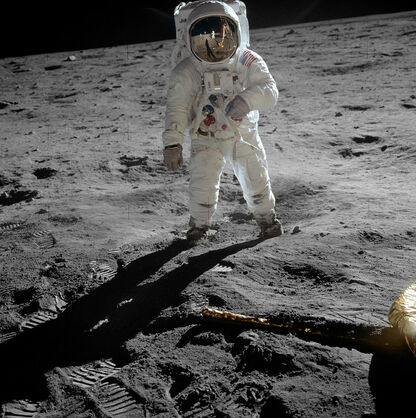 Apollo 11 astronaut Buzz Aldrin on the Moon Apollo 11 astronaut Buzz Aldrin on the Moon Conspiracy theorists and scientists share the fact that they are both skeptics, and skepticism is a healthy attitude in science. There is nothing wrong in being a skeptic, and truth be told, conspiracies should not be dismissed outright either as there have been a number of documented conspiracies. But many would argue that when it comes to some of the conspiracy theories outlined at the beginning of this post, conspiracy theorists are going too far in their skepticism and are not behaving like true scientists. So how do we differentiate between the reasonable skeptics and the irrational skeptics? How do we determine when conspiracy theorists are not behaving like true scientists? I have stated before that, unlike other disciplines, the reason that science can be right is that it can be wrong. In other words, scientific claims can be tested and proven wrong, if indeed they are. On the contrary, non-scientific claims can never be proven wrong. The proponents of non-scientific claims constantly move the goalposts and engage in fancy rationalizations to explain away the data that disprove their ideas. This is one of the characteristics of many conspiracy theorists. It is impossible to prove they are wrong, and in fact many of them when backed into a corner will argue that the mere act of trying to discredit their ideas is further proof that there is a conspiracy! It is important to identify these individuals in order to avoid getting sucked into pointless debates that will consume a lot of your valuable time. So here is the question you should ask conspiracy theorists: What evidence will convince you that you are wrong, and, if such evidence is produced, will you commit to changing your mind? If a conspiracy theorist cannot answer this question with examples of such evidence, and make the commitment to change their minds if said evidence is produced, then you can infer they are not behaving scientifically. This is one of the differences between a reasonable skeptic and an irrational skeptic.  Warming World Warming World There is another big difference between reasonable skeptics and irrational skeptics. Most conspiracy theorists are individuals who are perfectly comfortable with sitting smugly in their corner of the internet engaged in ranting out against their favorite targets to their captive audiences, but do nothing to settle the issue. Reasonable skeptics, on the other hand, do something about it. I have already mentioned in my blog the case of Dr. Richard Muller, a global warning skeptic who decided to check the data for himself. He got funding, assembled a star team of scientists (one of them would go on to win a Nobel Prize), and reexamined the global warming data in their own terms with their own methods. He concluded that indeed the planet was warming and that human activity was very likely to be the cause. This is the way rational skeptics behave. Why don’t proponents of the flat Earth theory band together, raise money, and send a weather balloon with a camera up into the atmosphere, or finance an expedition to cross the poles? Why doesn’t the anti-vaccine crowd fund a competent study to assess the safety of vaccines? Why don’t those that argue that scientists are hiding evidence of a young Earth finance an investigation employing valid methods to figure out the age of rocks? Why don’t 911 conspiracy theorists finance a believable attempt to try to model the pattern of collapse of the Word Trade Center buildings according to evidence? The answer is very simple, and it is the reason why fellow global warming skeptics repudiated the results of Dr. Richard Muller when he confirmed global warming is real. It’s because for the irrational skeptic, truth is a secondary consideration. Irrational skeptics are so vested in their beliefs and/or ideas that their main priority is to uphold their point of view by whatever means necessary. No fact or argument will sway them, no research or investigation is necessary. Because of this, when it comes to these characters, the best course of action is to apply Aldler’s Razor (also called Newton’s Flaming Laser Sword) which states that what cannot be settled by experiment or observation is not worth debating. The World Trade Center photograph by Michael Foran is used here under a Creative Commons Attribution 2.0 Generic (CC BY 2.0) license. Photo of Buzz Aldrin by Neil by Armstrong, both from the NASA Apollo 11 mission to the moon, is in the public domain. The image of a 5-year average (2005-2009) global temperature change relative to the 1951-1980 mean temperature was produced by scientists at NASA's Goddard Institute for Space Studies and is in the public domain. The creationist movement has changed strategies. Many of their adherents have become proponents of what is called “Intelligent Design”. Within creationist circles, the Intelligent Design movement is mostly considered a strategy to make inroads into the secular world of science. In transitioning to Intelligent Design many of its proponents accept that the Earth is billions of years old, that there is no geological evidence of a worldwide Universal Flood, and that populations of living organisms have the capacity for microevolution, which is the ability to adapt to changes in the environment. However, although Intelligent Design proponents accept that microevolution allows organisms to adapt and develop new abilities, they disagree with the idea that microevolution can give rise to evolutionary novelty, and they employ various strategies to explain away many of the numerous examples in the scientific literature where this has been documented. One strategy is to argue that these cases of generation of evolutionary novelty represent nothing but the mere reshuffling of preexisting genetic information. This argument is somewhat baffling as it is akin to saying that a new book is not really new because it is merely a reshuffling of words already present in previous books. But because more than reshuffling is often involved as random mutations are selected that improve certain abilities, Intelligent Design proponents have also argued that a Designer created the capacity in organisms to mutate information, reshuffle it, and adapt to changes in their environment! And, of course, if all else fails, Intelligent Design proponents will argue that the novelty in question is not a real novelty, that it is only a minor change, and therefore it is not evolution but rather just merely “adaptation”. Despite their acceptance of microevolution, the Intelligent Design movement denies that macroevolution can take place. Macroevolution is large scale changes that produce novelty like the transition from reptiles to birds, or from land dwelling animals to sea dwelling animals. Scientists tell Intelligent Design proponents that macroevolution is what you get if you let microevolution go on for millions of years, but Intelligent Design proponents disagree. A favorite Intelligent Design argument is that nobody has ever observed macroevolution. And this is obvious, of course, because macroevolution is a slow process that takes many millions of years. However, various lines of evidence including the fossil record have allowed scientists to demonstrate quite convincingly that macroevolution has indeed occurred. But, of course, Intelligent Design proponents have several clever retorts. For example, if there are no fossil intermediates between organisms “A” and “C”, Intelligent Design proponents will point this out claiming that “C” appeared suddenly (was designed) as opposed to evolving from A. However, if a fossil intermediate is found, “B”, Intelligent Design proponents will reply that there are no intermediates between “A” and “B”, and between “B” and “C”! Nothing but the discovery of highly detailed fossils documenting gradual change between two organisms will convince them that evolution has taken place. The obvious problem with this is that such highly detailed evidence may not be possible given the dynamics of the processes of fossilization and speciation, and the sizes of the populations of organisms involved in the process. In any case, why should the intermediate be an intermediate? After all it could be a different organism that was intelligently designed and that just happened to share characteristics of the other two!  In the elaboration of their criticism of evolution, Intelligent Design proponents also argue for the premise that they call “irreducible complexity”. What this means is that complex biological structures are composed of many parts each of which is necessary for their function. Therefore, they argue, a structure will not acquire its proper function unless all components are present and functional. Thus it is impossible for these structures to have evolved by accumulating their constituent parts because the assembly of these components into non-functional structures (at least until the last component is added and the whole becomes functional) would not be selected because they confer no advantage. To illustrate this principle, Intelligent Designers select structures that leave no fossil record such as bacterial flagella (a structure that allows bacteria to propel themselves) and demand that evolutionists come up with explanations as to how they could have evolved. Evolutionists have duly responded by pointing out several ways in which bacterial flagella could have evolved from simpler structures. But Intelligent Designers are not impressed. As described in the previous paragraph, they expect exhaustive step by step descriptive explanations of how these systems evolved, and when the ones provided don’t meet their demands, they declare a win for Intelligent Design. So we can only arrive at one conclusion. Intelligent Design has been intelligently designed! The strategy is clear. First, bite the bullet and accept some of the most obvious things like geological and astronomical evidence for an old Earth and microevolution (there will be time to come back to a literal interpretation of Genesis later). Second, concentrate your attacks on those aspects of evolutionary theory that can only be studied through fragmentary evidence, such as events that have occurred in the distant pass, or indirect evidence, such as those involving structures that leave no fossil record. Finally, demand a level of proof that is incompatible even with the best possible evidence that could be generated.
As an offshoot of creationism, Intelligent Design has been tailored to achieve one goal, and that is to discredit evolution and endow with academic respectability the notion that a designer is behind the appearance of new life forms in our world. Of course, when your ideas cannot be proven wrong even with the best possible evidence, then your ideas are not scientific, and with all of its twisting and turning around the evidence, Intelligent Design cannot hide this fact. The image from Pixabay by sbtlneet is used here under a CC0 Creative Commons license. 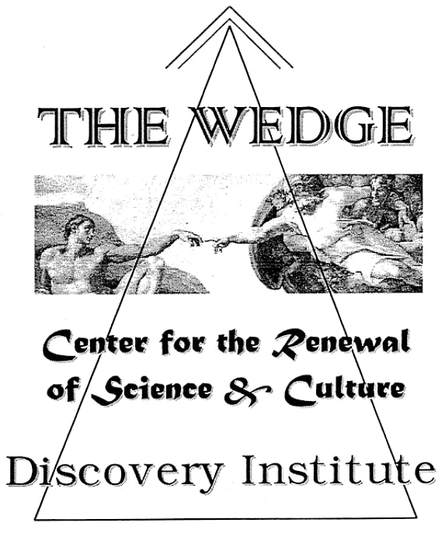 In 1999 the secret “Wedge Document” was leaked to the world. This document outlined the master plan of the proponents of Intelligent Design to infiltrate the scientific establishment and make Intelligent Design a valid scientific notion worthy of being taught in school alongside the theory of evolution. The governing goals of the plan were: “To defeat scientific materialism and its destructive moral, cultural, and political legacies”, and “To replace materialistic explanations with the theistic understanding that nature and human beings are created by God”. However, the highflying expectations of the Intelligent Design movement were stopped cold by a 2005 ruling by a Pennsylvania judge that exposed Intelligent Design as nothing more than religion masquerading as science. This was the last of a string of legal defeats that creationist suffered in the United States. One of the things that caught my attention about the Wedge Document is that creationists apparently object to materialistic explanations of how life on Earth arose and evolved. This greatly puzzles me because it is widely understood that science is incapable of any other type of explanations! And this is not due to science being co-opted by materialists who want to destroy God and religion.
Let me give you an example. Suppose you throw a bicycle in a pond that contains several fish. After a while the fish will probably swim around the bicycle, but they will definitely never ride it. Can you conclude that the fish rejected the bicycle? Of course not, because it is not in the nature of fish to ride bicycles. Following this analogy, we must understand that the whole concept of a God, or any proposal that involves theistic (related to a God) intervention, is not in the nature of science to analyze or comprehend. Science cannot elaborate hypotheses that involve divine intervention to explain what happens in the world, because they are not testable. Only materialistic explanations are testable, and here is where the problem arises. Creationist believe that the Earth is 10,000 years old, that life on Earth appeared in one creation event involving 7 days, that there was a universal flood, and that the first man was created from clay directly by God. Of course science has found that the Earth is billions of years old, that the diversity of life on Earth did not appear in a span of 7 days, that there was no universal flood, and that humans evolved from other life forms. Creationists view these notions as an attack on their beliefs, and they are scandalized when this knowledge is taught in schools. Are scientists doing this to reject the literal creation story of the book of Genesis in the Bible, discredit theism, and impose materialism? The answer is no. Scientists ask questions and provide answers based on the evidence. Of course, a particular answer may conflict with your beliefs, but what are scientists to do if that is where the evidence leads them? There is no ill will, no master plan to discredit theism and impose materialism, just the search for truth. There are some scientists, such as Richard Dawkins, who disavow religion and advocate exclusively for materialistic explanations regarding the origin of life and humanity, and that is their prerogative as freethinking individuals in an open society. But a large number of scientists from many cultures are believers, and they see no conflict between science and religion. However, what these scientists understand is that religious books such as the Bible should not be used as textbooks of natural history. These scientists subscribe to the maxim attributed to Galileo that the Bible teaches how to go to heaven, not how the heavens go. Science is the best method we have to find the truth about the behavior of matter and energy in the world around us. In this sense, when it comes to the natural world, science can help us in deciding what to believe or how to believe it. But science has limitations. It cannot tell us what is right or wrong, it cannot give us the guidance we seek as to the best way to live our lives from a moral and ethical point of view, it cannot provide us with values. This is the realm of religion, faith, and belief. These different areas of expertise that the late Harvard paleontologist Stephen Jay Gould called non-overlapping magisteria are necessary for the education of balanced human beings, and they should be kept separate. Science should be taught as science and religion should be taught as religion. Creationist should, to quote a person whose teachings they know very well, “render unto Caesar the things that are Caesar's, and unto God the things that are God's”. The tittle page image of the Wedge Document is in the public domain. |
Details
Categories
All
Archives
June 2024
|
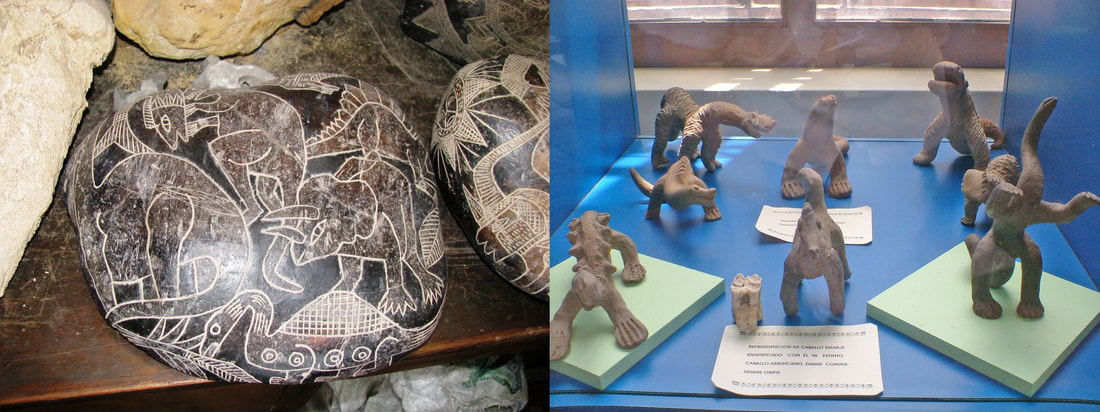

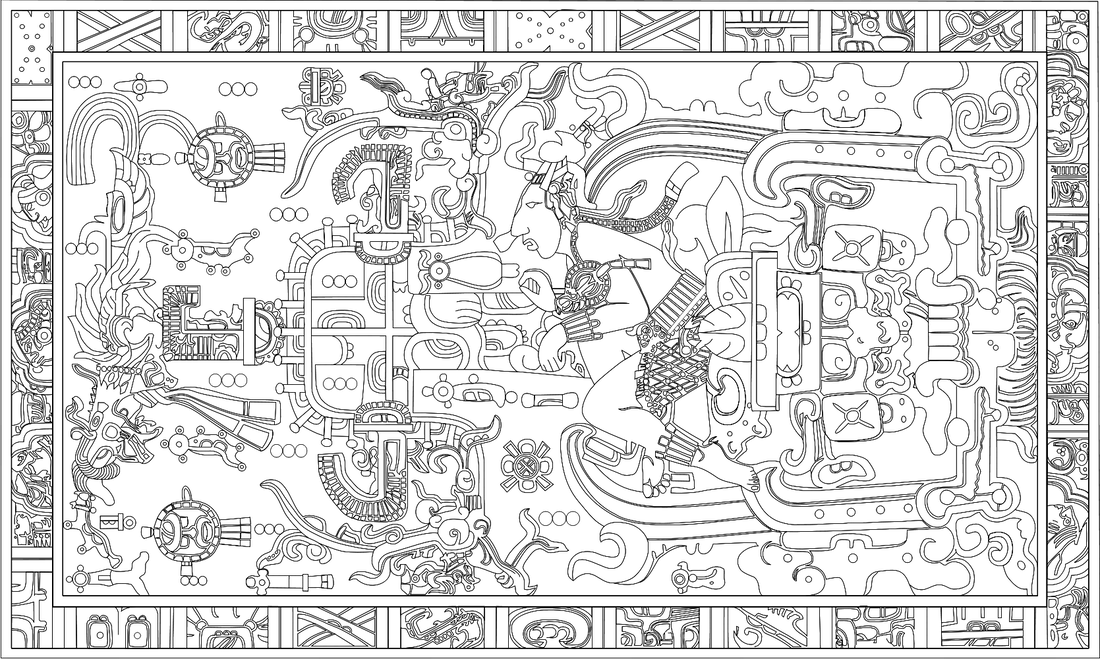
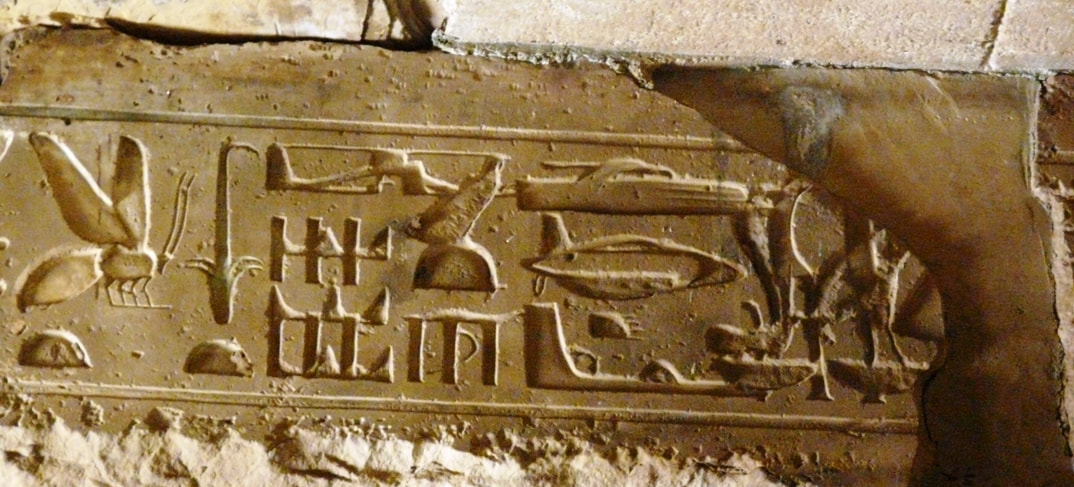
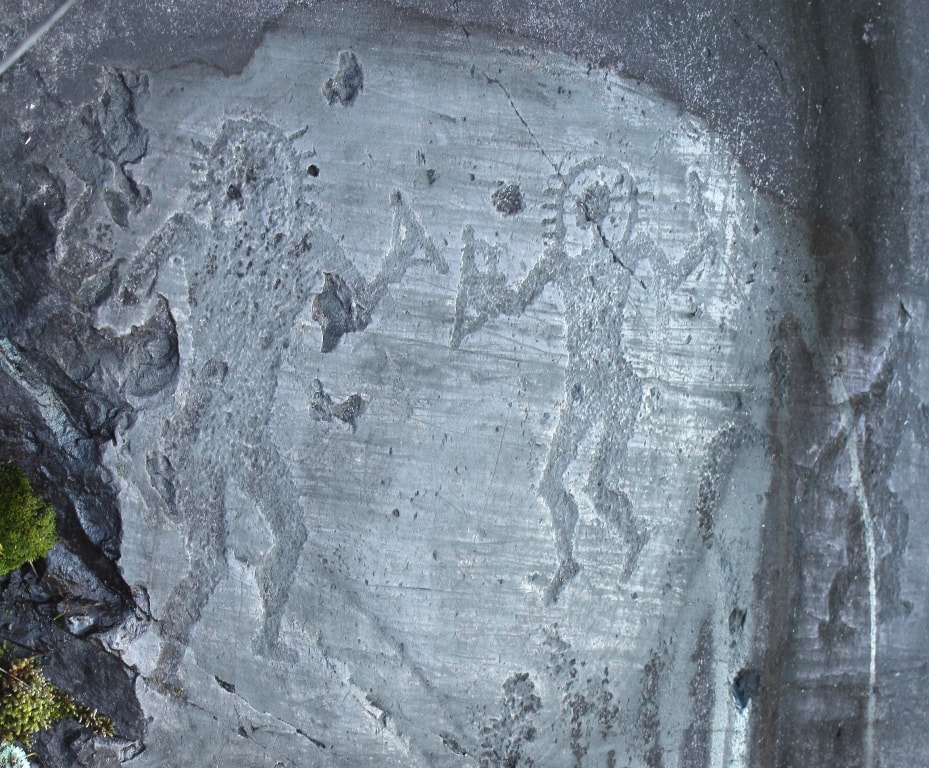
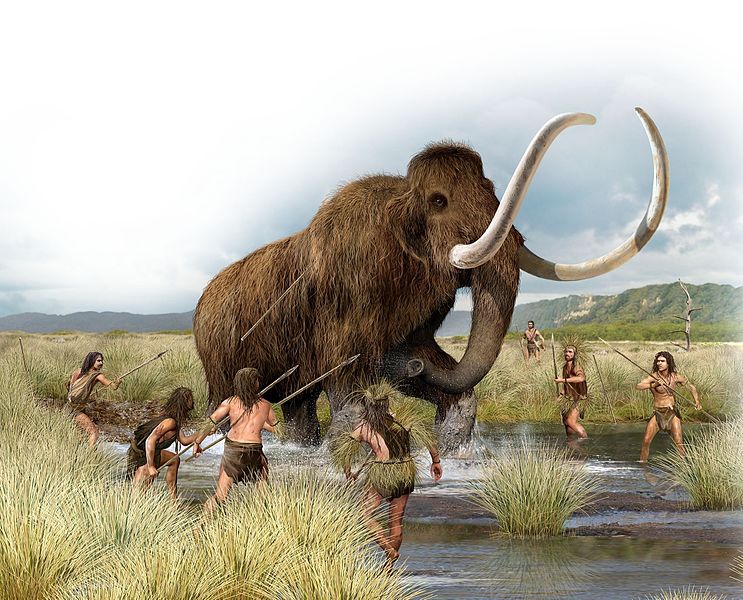
 RSS Feed
RSS Feed